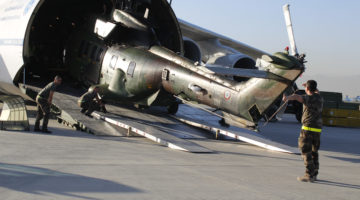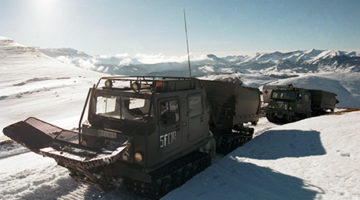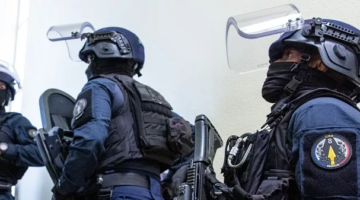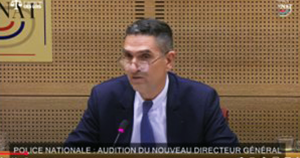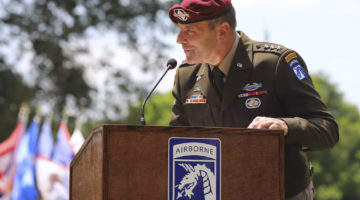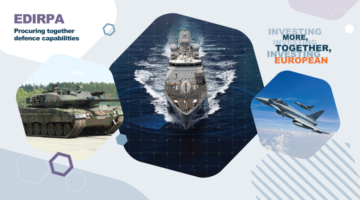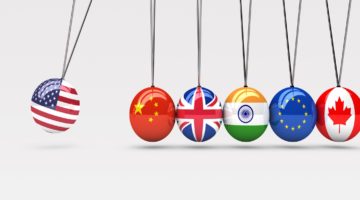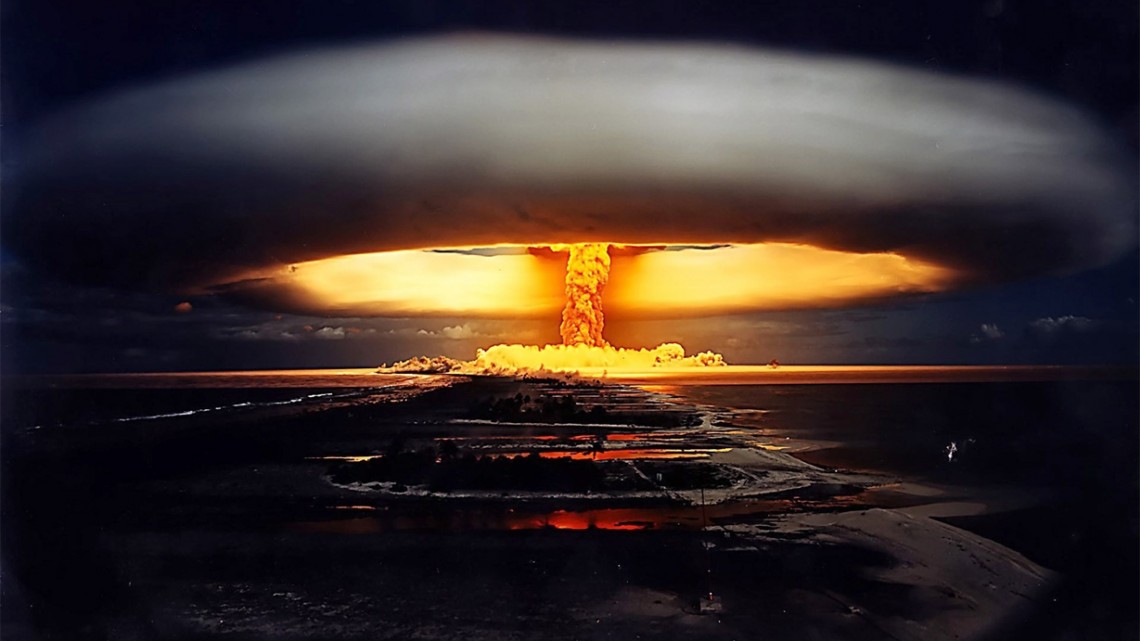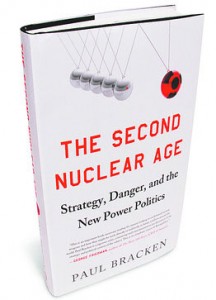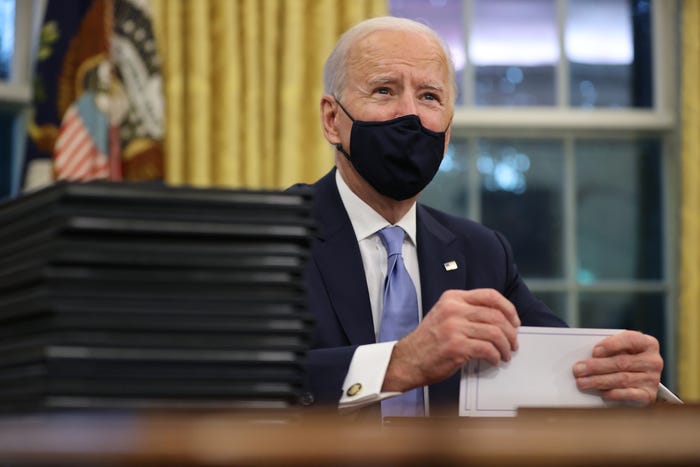Photo credit © Document CEA
The challenge of the second nuclear age is to frame the problem of the spread of atomic weapons in the right way.
If we frame the problem in the right way we will at least be in the right ballpark with any proposed ways to manage it. Our decisions will then be focused on the right problems, so to speak. If the challenges of the second nuclear age are framed in the wrong way, there is little chance that good decisions will be made, since they’ll be directed at the wrong problems.
This counsel might seem banal. But it’s important. We are in the early stages of the second nuclear age. The real problems are only taking shape, and the norms and conventions that will surely develop don’t exist yet. Some of them, at the moment, are completely unthought of.
There’s just a lot we do not know yet about the dynamics of a multipolar international order where many of the major powers have nuclear weapons and where some of the secondary ones do as well. It’s like we are in back in 1948, in the very early cold war.
The vocabulary and distinctions of a nuclear crisis haven’t been invented yet.
Counterforce and countervalue, deterrence, second strike surviving forces, signaling, escalation and de-escalation, fail safe operation are undiscovered in 1948. By 1958 all of them will be widely used, and institutionalized into U.S. forces and plans.
These concepts were not perfect solutions to the challenges of a first nuclear age, but they were a giant step ahead of the debate in 1948. They also were the basis of a U.S. nuclear strategy. Arranging them in different ways gave different strategic alternatives.
For example, one school of thought sought to maximize counterforce striking power, while another wanted to emphasize second strike countervalue forces. People debated which of these was better.
But my point is that in 1948 the country couldn’t have a meaningful debate about what the best U.S. strategy was because they lacked a vocabulary and distinctions for doing so.
This possibility – that there could even be such a thing as a nuclear strategy – was widely denied by experts in the late 1940s and early 1950s. Many experts (e.g. Bernard Brodie working at RAND) believed that strategy had come to an end. Many individuals in Congress and the Pentagon believed the same thing. They saw the awesome destructive power of nuclear weapons as so great that no strategy could be developed to apply this power to a larger end.
As a result, thinking about what a nuclear war would be like, how it might start, or, especially, how it might end came to a stop. This was quite dangerous. The single greatest security challenge that the United States ever faced was getting little serious attention – beyond telling leaders that they must avoid a nuclear war at all costs.
Some brave, creative analysts saw what was happening. It was the very absence of analytical attention that invited disaster. A small crisis could blow up into a war. A war could escalate. Or a nuclear war might go on without pause because no one had thought how to stop it.
In other words, there were a lot of scenarios and possibilities that were being overlooked because of the inhibition against analyzing various dynamics between nuclear armed countries.
I think the people who broke the ice here – those who studied nuclear war in a serious analytical way – deserve a lot of kudos. They made the cold war safer. Of course it was better to avoid nuclear war. But that’s like saying it’s better to avoid Hurricane Katrina or the AIDs epidemic rather than trying to manage them so that the damage is limited.
History is repeating itself today.
In my book, The Second Nuclear Age (Macmillan, 2012), I argued that the quality of thinking today about nuclear weapons had reached a dangerously low level in the United States. What was happening was in certain ways like 1948. The idea was that if any discussion about using nuclear weapons was allowed, people would conclude that these things had value, and this was a message the United States shouldn’t send.
I can see the logic behind this argument. It does have some validity, in my view. But I don’t find it persuasive.
Because it means that the challenges of a nuclear Iran, Pakistan, Israel, and North Korea, and the refusal of the major powers to embrace disarmament, are being treated the same way nuclear escalation was in the late 1940s. The advice is: “Don’t think about it.” Whenever a nuclear context is introduced to any of these problems the strong reaction is to offer arguments about why it won’t happen, why it can’t happen, or whey we have to make sure that it doesn’t happen. Few people think about what happens when it does happen.
But a nuclear context is happening.
It is enveloping every one of the problems listed above, as well as regional dynamics and the shifting strategic balance in East Asia and South Asia. At present there are nine nuclear weapon countries, and all of them – with one exception, the United States, — are modernizing their forces for 21st century conditions. The change from a conventional to a nuclear context is one of the biggest challenges we face.
But, as in the late 1940s there’s an unwillingness to consider its significance.
Granted, some analysts do look at the challenges of this second nuclear age in terms of the old nuclear frameworks used in the cold war. Deterrence is advanced as the bedrock concept. Now, I happen to think that deterrence will be important in the second nuclear age, as it was in the first. My difficulty with deterrence is that it’s incomplete.
There’s a lot more things going on than can be considered under the single concept of deterrence.
To truly understand the challenges of a second nuclear age we need multiple perspectives, not just one.
A starter set of what I believe these perspectives are is as follows:
- Multipolarity
- Changing Attitudes toward Nuclear Nonproliferation and Other Institutions
- Shifts in Technology
- Defense Economics
- Deterrence.
I would like to use this Forum to explore the second nuclear age using a multiple framework approach.
My first entry, on multipolarity, is included below. I will add something on the other frameworks as the discussion progresses. Others may want to comment or add something on any of the frameworks, or on entirely different ones that they believe are important.
Multipolarity
The fundamental difference between the first and second nuclear ages is multipolarity – meaning that the international system today is made up of major powers many of whom have nuclear weapons.
To be clear, I mean the United States, Russia, China, India, Britain, and France.
Others, like Japan or Brazil may join this group. While it is true that the first nuclear age also had several nuclear powers, back then there was a useful fiction at the strategic level that it was a bipolar world.
The fiction of nuclear bipolarity is no longer tenable.
Multipolarity with nuclear weapons does not look to be some temporary condition. hat is, it isn’t the case that major powers are about to honor the nuclear nonproliferation treaty (NPT) by embracing disarmament.
So we need to accept this world as being around for several decades at least, probably much longer.
The dynamics of multipolarity at the nuclear level have received scant attention.
For example, with more players it may be harder to reach a decision. The major powers may not be able to converge on a common policy about what to do about secondary powers seeking to get nuclear weapons. They may agree in principle.
But they may not agree in practice, when all of the messy details are included.
Russia, to my mind, probably doesn’t want a nuclear Iran or North Korea. But reaching a deal with China and the United States to stop Iran or North Korea is hard. There’s a lot more going on than counter proliferation from Moscow’s perspective. Trade, status, egos, all matter, as does not wanting to allow Washington to be the grand victor in reversing the spread of the bomb around the world.
Just consider U.S. handling of Israel over the years on the nuclear question to see how difficult it is for China to stop the North Korean nuclear program or Russia to stop the Iranian one. Agreement is often easy to get in principle, but difficult to achieve in reality.
Multipolar systems also, inevitably, have their own dynamics aimed to maintain a balance in the system. China also doesn’t want a U.S. “win” on too many issues because it could upset the balance. t might embolden Washington in in other areas, such as spreading democracy or criticizing China’s handling of its economy.
In a multipolar system there are natural coalitions that form to offset the strongest power. This looks like what has happened in the last ten years. Despite many differences between them, China and Russia line up to check the United States. It would be interesting to explore how this dynamic could play out in nuclear arms control.
Nuclear arms control today is a legacy of the cold war, a bipolar rivalry. Yet, it is being asked to carry the load in a multipolar world. It is quite astonishing to me how START, et al haven’t been modernized for the era we live in. This Treaty is still built around preventing a surprise Russian attack on the Minuteman force. Little wonder that it inspires negligible excitement or creativity any longer.
Multipolar systems also have a built degree of mistrust. This is because countries may switch sides. France switched to ally with Britain and Russia in the late nineteenth century and this was a major cause of World War I. The United States sided with China in the 1980s, against the Soviet Union. All of the talk about democracies aligning with each other was tossed out the window when it became expedient for Washington to press Moscow from another flank.
In short, a key aspect of the strategic reality of the Second Nuclear Age is multi-polarity and how multi-polarity intersects with aspirational nuclear powers.
First published on SLD Info


